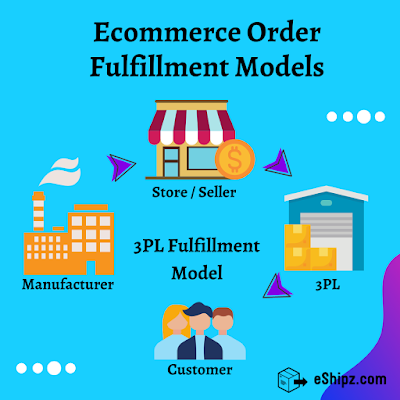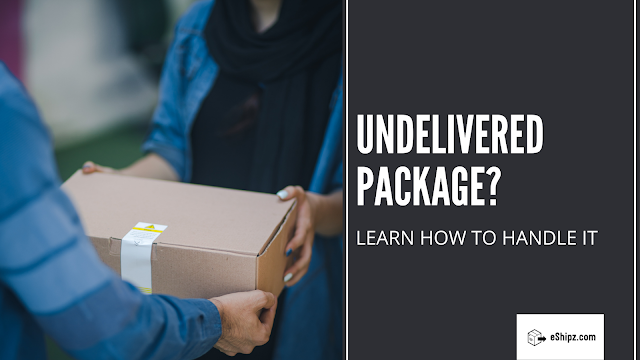Ecommerce Fulfillment Models – How it works? Which is the best Model?
Businesses
in the recent times are shifting to digital commerce and at the moment there
are numerous e-commerce businesses in the market for which, providing only the
quality products at right prices is not enough. Delivering the product to the
customer as fast as possible becomes the new goal for any e-commerce business.
According to a report, there are approx. 330 million digital buyers in India
and almost every one of them prefers fast delivery for their product. It's very
much visible that the competition is very high and picking the best Ecommerce shipping solution can make a lot
of difference for your business.
What is Ecommerce
Fulfillment?
Ecommerce fulfillment service: Fulfillment centres are the places / warehouse facilities from which an ecommerce order is shipped. The sellers store their inventory in the fulfillment centre so it is ready to be shipped as soon as an order is placed. These ecommerce fulfillment centres aim to deliver the orders to customers on time, efficiently.
In simple words, fulfillment service is picking, packing and shipping your ecommerce orders to end consumers. Every ecommerce order has to be fulfilled, whether they outsource it or do it by themselves.
There are multiple ways / modes of fulfilling your ecommerce orders across channels. Earlier the fulfillment worked only on one method that is self. However now due the rise in the ecommerce sector and increased demand of online orders, fulfillment has become crucial and a lot easier and convenient. Your products being stored and shipped vary as per the timelines, locations, efficiency, advanced technology etc.
The e-commerce fulfillment process starts from picking up the product from the
point of origin and then it includes warehouse/inventory management,
transportation, and at last it ends with delivering the product to their
respective customers.
And, what are Ecommerce
fulfillment methods / Models?
Basically,
there are three major types of model which are-
1.
Self-Fulfillment Model
2.
3rd Party Logistic Model(3PL)
3.
Drop-Ship Fulfillment Model
Each of
the above model has its own advantages and disadvantages and the application of
these models fully depends on business to business. But before making any
choice let's understand each and every model precisely.
It’s the model, where everything is done by the seller. In this model sellers, themselves have to take care of each and every process which includes inventory management, packing & shipping of the product. Generally, small businesses or businesses who have the bandwidth to fulfill the order all by themselves follow this model to avoid all the extra costs involved in storing the inventory in the ecommerce fulfillment centres.
The seller gets full command of the process in this model like inventory
management, storage, warehousing, packing, labelling and shipping all under one
roof but at the same time this process is very time-consuming and needs proper
system in place to manage the inventory.
This is the most used and renowned model in the e-commerce industry where a third party logistic company handles the entire fulfillment process. In smart logistics, the seller doesn't need to take care of anything; the third-party logistic company receives the product from the seller, handles the product throughout the inventory management process and finally delivers it to their customers. In other words, the seller outsources the entire fulfillment process to a professional company who can store, pick, pack, ship the orders to the end customer on your behalf.
Medium, large or Big enterprises go for this kind of model, since this will save them from investing a lot on infrastructure, systems, operations, man power, equipment and technology etc.
Outsourcing
the fulfillment process saves a lot of time for the seller as well as provides
insights and growth opportunities with the help of third party logistics.
Nowadays many people run their business on Facebook, Instagram, WhatsApp and they follow this model where they let manufacturers handle the products and have them directly send it to their customers. Simply put, in this scenario manufacturers or the factories does all the production, storage, picking, packing and shipping the order directly to the customers who has ordered it online.
Here the
seller or a store owner does not store the product instead will ship the orders
directly from the manufacturing unit whenever they receive any order. The
seller is a middleman and acts as bridge between the manufacturer and the
customer. For a seller this is a cost-effective model, since all the overheads
and expenses are managed by the manufacturer and on the other hand the
manufacturer gets the full authority of the fulfillment process and also
customer satisfaction fully depends on them.
Which Model is the Best For
Your business?
Every model is very unique in its own way and has its own share of pros and cons. But having an ecommerce fulfillment model is extremely important for any business. If you are someone who has a small business and wants to handle the order fulfillment process entirely on your own then the Self-fulfillment model and Drop-Ship model is best for you.
But if you are a medium or large-scale e-commerce business then the 3rd Party logistic model will definitely work for you.
However,
once you have decided which model is best for you, the immediate next step is
in selecting best Shipping management software. This is where eShipz come into
the picture. Eshipz is a Enterprise Shipping solution that provides the best
logistics automation services to the medium and large scale e-commerce
businesses where you can process orders, print labels, do tracking, check
reporting and Analytics, all in no time. Not only that, eShipz also acts as an
Order management software for your business facilitating you to import all your
orders via sales channel integrations resulting in proper supply-chain
visibility, prescriptive analysis, return management, and many more. For more
information contact us here..






Comments
Post a Comment